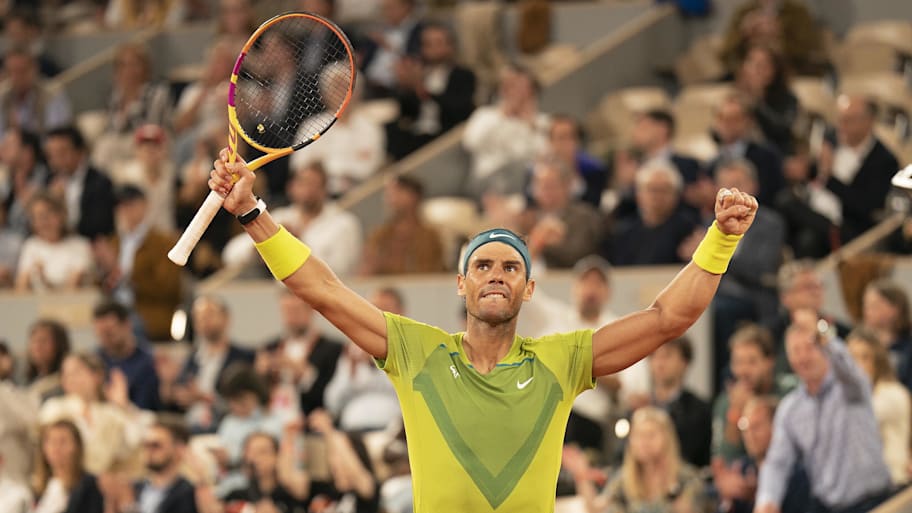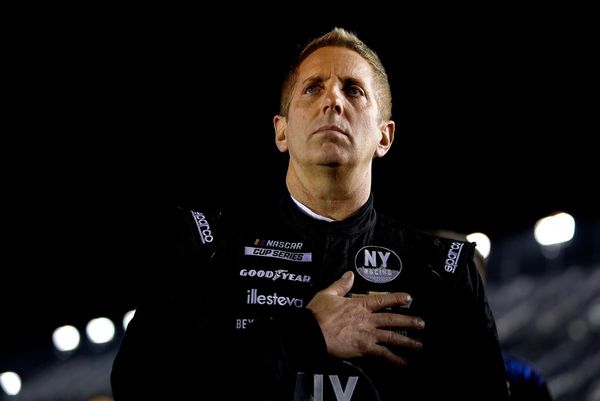
When Roland Garros (also known as the French Open) begins next week in Paris, it will feel a little emptier. For the first time in more than two decades, Rafael Nadal is no longer an active professional tennis player. Which means the field will be deprived of the most successful clay court player in the sport’s history, a man who won the title an extraordinary 14 times.
To ease the absence—and take the measure of the man and his career—here comes Christopher Clarey, longtime tennis journalist, with a new book The Warrior: Rafael Nadal and His Kingdom of Clay. On the heels of his examination of Roger Federer, The Master, Clarey rolls up his sleeves, adjusts his water bottles and focusses on Federer’s rival.
Sports Illustrated: How do you compare the experience of writing a book on Roger Federer to the experience of writing a book on Rafa?
Christopher Clarey: I wrote about just this in the opening chapter of The Warrior:
“To explore Nadal properly it feels like you need to follow his lead by sweating and suffering: going the extra mile, even on your off days. As I wrote this book, I was drawn, Rafa style, to rituals—early‐morning walks, coffee grinding, deep breathing—to keep my mind off the finish line. There is Method acting. This is Method writing, and the more you learn about Nadal, the more you don’t want it to come easily, don’t want it without problems to solve and heavy brush to clear. When riffing on Roger Federer, as I did in my book The Master, the ideal state is surely the flow state. Writing on Nadal, you feel as if you need to sense the strain, feel the burn, as you build the narrative red brick by red brick with an occasional tug of the seat of the sweatpants to keep things moving along in orderly fashion at the laptop.”
I was also concerned about avoiding overlap. Nadal and Federer, despite the five-year age gap, played the majority of their careers in the same era and had a transcendent rivalry spanning 15 years. I explored this in The Master and did not want to plow the same field, at least not for long. It was one of the reasons I was drawn to a much different narrative structure for The Warrior. The Master was based around locations and focused on Federer’s development and global outlook (with a Swiss accent). The Warrior takes in Nadal’s full career but zooms in throughout on the clay and Roland Garros, the tournament where he won a preposterous 14 singles titles and the event with which he will always be most associated. It is a dual profile, in a sense. I wanted to go deep on the man and the place.
SI: You covered Rafa Nadal from the beginning of his career. How did you “overcome” confirmation bias and approach this subject afresh?
CC: Producing a thousand-word daily column and writing a 337-page biography are disparate tasks, no doubt, but I think reporting is at the core of both. I interviewed more than 100 people specifically for The Warrior, many of whom I had not spoken with in my years as the tennis correspondent for The New York Times and International Herald Tribune. They included early advisors like Jofre Porta, the first Majorcan ATP player Alberto Tous, Nadal’s longtime assistant coach Francis Roig and Nadal’s career-long contact on string and equipment, Jean-Christophe Verborg of Babolat.
Though I had lived in Spain for eight years, I also made my first visit to Manacor and Porto Cristo, the Majorcan communities that were and remain Nadal’s spiritual and material bases. But what kept a familiar subject particularly fresh was digging into the history and nitty-gritty of Roland Garros. That led me to speak about Nadal for the first time with those who played a big role there during his nearly 20 years of domination. People like groundskeeper Philippe Vaillant, tournament director Guy Forget and tournament announcer Marc Maury, who met Nadal when he was very young and later came up with the long and lilting on-court introduction of Nadal’s Roland Garros titles—“2005, 2006, 2007, 2008, 2010 …”—that became as good a symbol as any of the absurdity of Nadal’s achievement in Paris. Perhaps my favorite interview for the book was with Jordi Díez Fernández, the Spanish sculptor who made the statue of Nadal that now stands near the main entrance at Roland Garros. Diez does not just have a way with stainless steel. He has a way with words, and he took me inside the creative process and his singular vision of Nadal.
SI: What, ultimately, made Nadal Nadal?
CC: I take this question two ways. What characteristic made Nadal Nadal? And what elements went into making Nadal Nadal? I spend a lot of time exploring both of those themes in The Warrior. I often flash back to a roundtable we had with Nadal after he won the 2009 Australian Open when he told us, “Maybe I like more fighting to win than to win.” That still sums him up for me. But what seemed critical in creating that ethos was his relationship with his uncle Toni, who trained and conditioned his nephew to not only expect adversity on court, but to look forward to it and embrace it. Much easier said than done, but with so very few exceptions, most involving [Novak] Djokovic, they achieved it. And the plural is essential. Toni is the reason Rafael became a tennis player. He would have been, I am sure, a professional soccer star, probably for Real Madrid, without his influence. But so many other youngsters would have cracked, burned out or rebelled when confronted with Toni’s code. Rafael did not. He had the inner strength and staying power to accept it and embody it. He was also, let us not forget, an off-the-charts athlete.
SI: What motivated him more: running toward? Or, being chased by?
CC: Running toward, no doubt. Nadal is a born competitor, but his toughest competition was always, and by design, himself. He chased improvement and post-workday satisfaction on a daily basis without ever declaring victory.
SI: What did you learn about his personal relationships with Federer and Djokovic that you didn’t know—or assume—prior?
CC: I spent much of the last 20 years writing about those rivalries. This book, I hope, benefits from that process, but I certainly added layers to my knowledge base in reporting The Warrior. I had not realized to what degree there had been tension between the Federer and Nadal camps in the early years. It ultimately went in a very different and remarkably collegial direction, but that was no given.
SI: You didn’t want to do an “as told to” book, which gives the subjective editorial control. You also didn’t want to alienate Nadal and camp to the point they denied or complicated your access. How did you thread this needle?
CC: This book was an independent project and was not written with Nadal or his team. I of course informed them I was doing it, and they neither sought nor had any say in its contents. But it could not have been written without all the insight and time that Nadal and his camp gave me over 20 years of coverage for the Times and IHT. I was, and remain, grateful for that and sadly have my doubts that an independent book like The Master or The Warrior will be possible down the road considering how much superstar athletes and their agents increasingly limit uncontrolled access and try to direct the narrative. But I wrote freely, just as I did during my career as a daily print journalist.
SI: You've now written books on two of the big three … Reassure us you are playing authorial best-of-five!
This article was originally published on www.si.com as Behind Rafael Nadal’s Dominance on Clay.







